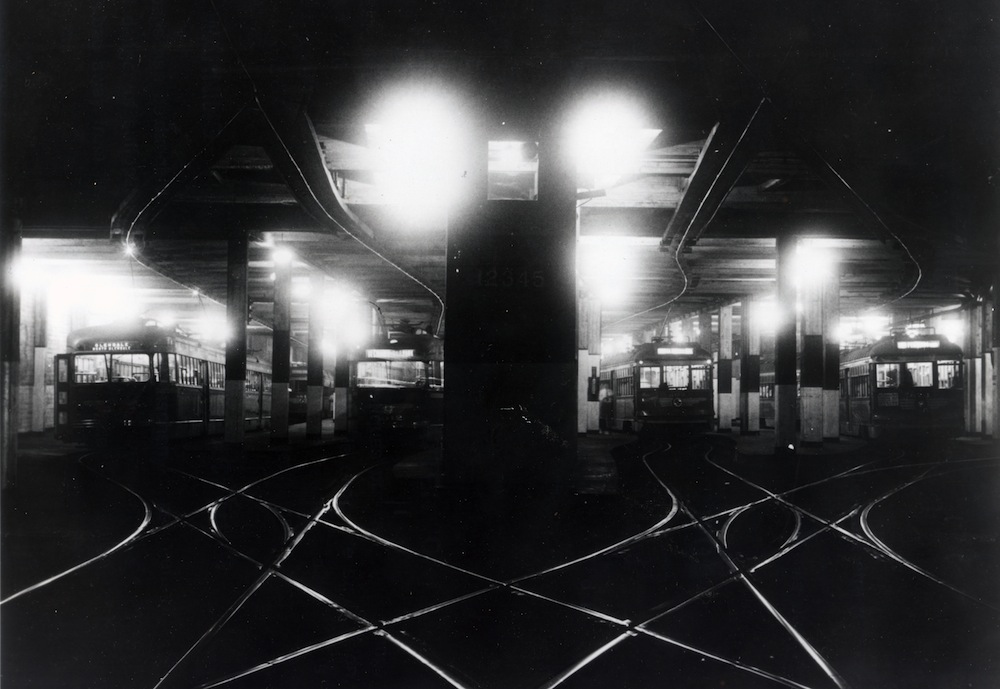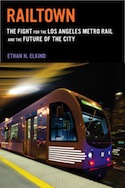
How did rail gain a foothold in a car culture city? UCLA and UC Berkeley legal, business, and environmental scholar Ethan N. Elkind used archival documents, contemporary news accounts, and interviews to show how the Los Angeles Metro Rail took shape. Elkind visits Zócalo to discuss the future of trains in Los Angeles. Below is an excerpt from his book Railtown: The Fight for the Los Angeles Metro Rail and the Future of the City.
 The explosion that forever changed the course of Metro Rail had its roots in a turn-of-the-century dairy farm. In 1901, Arthur Fremont Gilmore owned a 256-acre farm near West 3rd Street and Fairfax Avenue, at a time when the Fairfax district in Los Angeles consisted mostly of bean fields and cattle pens. He set out to dig a water well on his property, but in true Beverly Hillbillies fashion, Gilmore accidentally struck oil. His discovery prompted an oil exploration boom, and his property later became part of the Salt Lake Oil Field with over four hundred oil wells. This field, located on land that would eventually become part of the Wilshire corridor and the most desired route for the Los Angeles subway, was suddenly the most valuable land in California.
The explosion that forever changed the course of Metro Rail had its roots in a turn-of-the-century dairy farm. In 1901, Arthur Fremont Gilmore owned a 256-acre farm near West 3rd Street and Fairfax Avenue, at a time when the Fairfax district in Los Angeles consisted mostly of bean fields and cattle pens. He set out to dig a water well on his property, but in true Beverly Hillbillies fashion, Gilmore accidentally struck oil. His discovery prompted an oil exploration boom, and his property later became part of the Salt Lake Oil Field with over four hundred oil wells. This field, located on land that would eventually become part of the Wilshire corridor and the most desired route for the Los Angeles subway, was suddenly the most valuable land in California.
By the 1920s, clever capitalists had largely drained the fields and then abandoned them. But the state had no laws governing cleanup operations and the proper capping of wells. Deep pockets of methane gas, a byproduct of oil, were now rising to the surface from improperly capped wells, joining methane formed from decaying plant and animal matter.
As Angelenos covered the abandoned oil fields with streets, houses, and businesses, the cement formed a cap that prevented the gas from percolating through the soil and evaporating. Meanwhile, locals drained the underground aquifers for drinking water, which gave the gas room to expand. In 1976, when scientists determined the water was unhealthy, the city stopped using the wells. Unusually wet winters over the next decade replenished the aquifers and pushed the methane to the surface.
One methane pocket was located approximately 40 feet below a Ross Dress-for-Less department store on Fairfax Avenue. The gas seeped between the floor slab and foundation walls of the store into a basement room that lacked ventilation. Annexed to the room was the store’s employee lounge, and at 4:47 p.m. on March 24, 1985, a worker punched the time clock there. Then all hell broke loose.
Sixty-two-year-old Rose Sanchez was buying a robe for her mother at the Ross cash register when suddenly the earth began to shake. “For a moment we thought it was an earthquake,” she said. Then the explosion hit, and it sent the walls flying. Flaming clothes hangers swirled overhead. Chris Moore, a security guard who lived a block from the store, felt the blast in his apartment. “Windows and everything was shaking. I looked outside and I could see debris two or three hundred feet up in the air.”
Smaller explosions quickly followed the initial blast, and inside the store Sanchez and several other customers huddled together on the floor. “Suddenly we could see the sky through a large hole in the roof and air came rushing in, creating something like a tornado,” Sanchez said. “It looked like it was raining fire. It was like a cyclone. Gusting air, screams, ashes, black objects flying around. It was horrible. Everything was on fire.”
The explosion had blown the ceiling up into the air, but now it began to fall back to the ground. Fortunately, a gust of wind caught the roof before it could land on the customers. With fire raining down, they decided to escape to the street. They grabbed pieces of clothing and placed them over their heads to protect themselves from the rain of fire. As they ran to the parking lot, another explosion knocked them to the ground. “We saw the earth crack and flames shooting out,” Sanchez said.
Outside, the explosion had ruined the automobiles in the parking lot, cracking the car windows and blistering the paint. The shock wave smashed windows as far as three blocks away and damaged a nearby beauty shop, bank, cafeteria, fish market, variety store, and paint store. Twenty-one people were ultimately sent to the hospital, including some with severe burns.
Th e disaster shocked Los Angeles. The front page photo of the Los Angeles Times the next day resembled a scene of biblical destruction worthy of a Hieronymus Bosch painting. Fairfax residents asked themselves which buildings in the area would be next.
Although businesses in the area reopened four days later, the effects of the explosion on Los Angeles rail transit would last for decades. Henry Waxman, the area’s powerful congressman, would use the threat of another explosion to stop a subway he never much cared for in order to protect neighborhoods in his district from gentrification and disruption caused by rail.




Send A Letter To the Editors